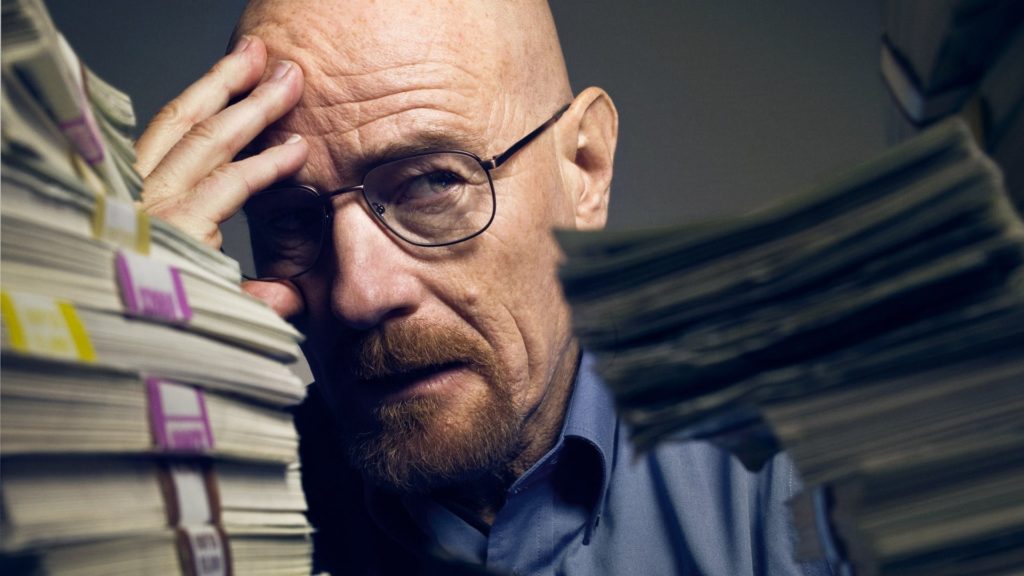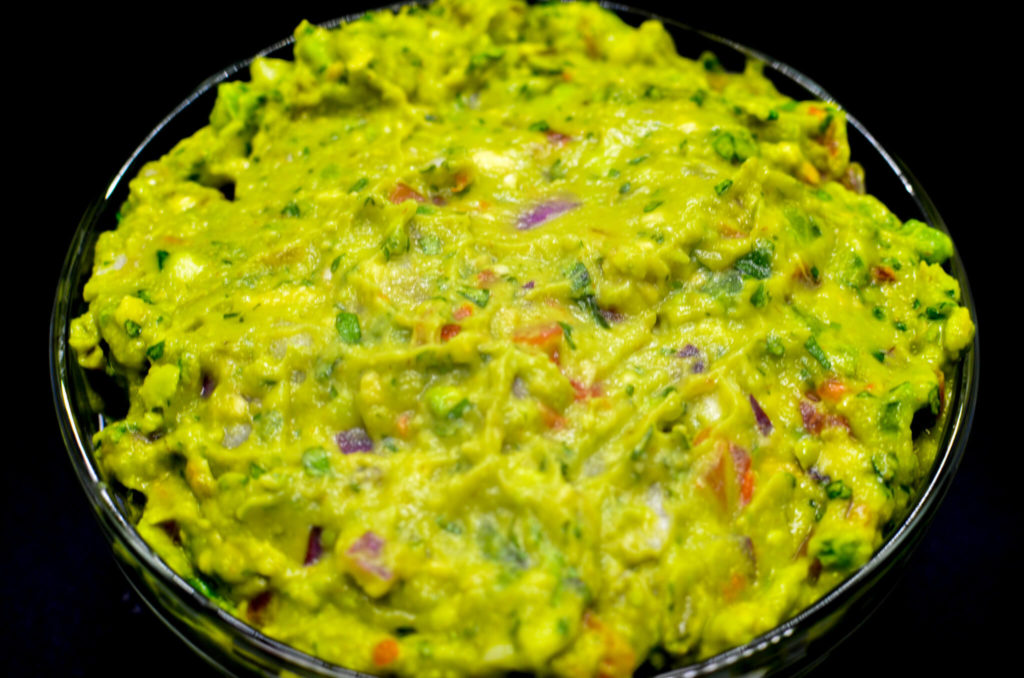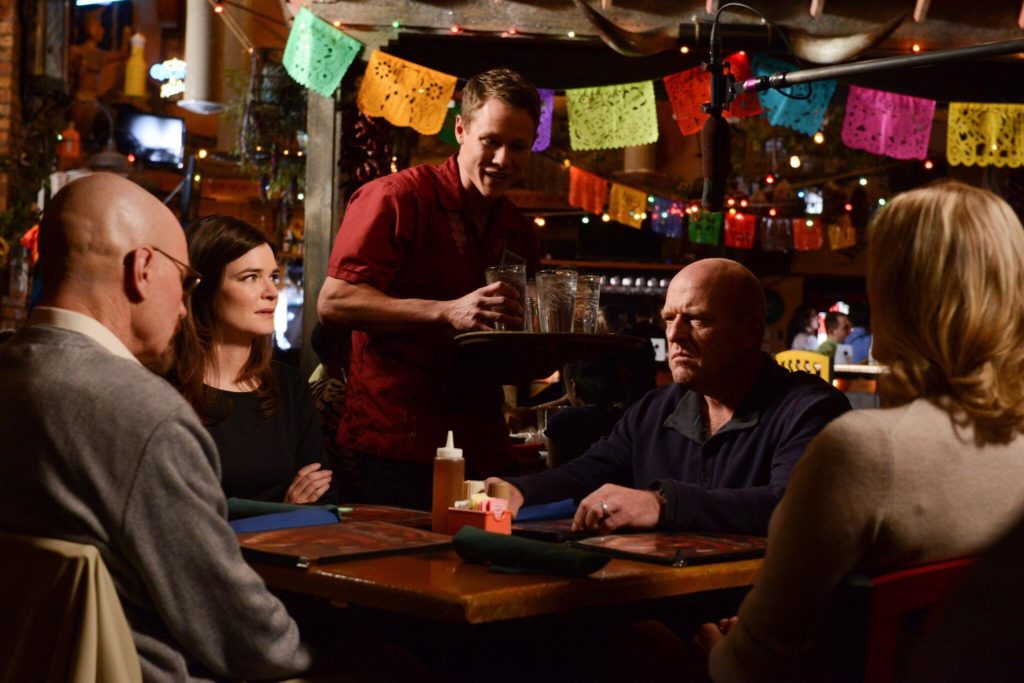Breaking Bad

TV-MA, (2008-2013) Drama/Thriller, 49m
Table of Contents
What Is Breaking Bad About?
A chemistry teacher with terminal lung cancer turns to cooking meth to make the most of his remaining time.
Why You Should Watch Breaking Bad
Creator Vince Gilligan wouldn’t in his wildest dreams imagine that a script about a high school teacher cooking meth would turn into arguably one of the greatest shows of all time. Other networks were just as skeptical, as the pilot was initially rejected by TNT, FX, Showtime, and even HBO before ultimately getting picked up by AMC network. Most television shows aren’t bold enough to turn the protagonist into the villain, but Vince’s vision of turning the protagonist into a villain was what made this show so special.
Breaking Bad is a critically acclaimed television series that ran from 2008 to 2013. The show follows the story of Walter White, a high school chemistry teacher who turns to making and selling methamphetamine after being diagnosed with lung cancer. The series is known for its complex and flawed characters, intense plot, and incredible performances from its cast, particularly from Bryan Cranston as Walter White.
Walter White is a particularly interesting character. At the beginning of the series, he is a meek and unassuming high school chemistry teacher who is struggling financially and feels trapped in his mundane life. However, as the series progresses, Walter transforms into a ruthless and dangerous methamphetamine manufacturer, known as Heisenberg. It is a fascinating character arc, and Bryan Cranston delivers an incredible performance, capturing both the vulnerability and the ruthless ambition of Walter White.
Another standout aspect of the series is its visual style. The cinematography is top-notch, and the show makes great use of its setting in Albuquerque, New Mexico. The use of color and lighting is particularly effective in creating a distinct and memorable aesthetic. For example, the blue hue of the crystal methamphetamine, which is central to the plot, is used to great effect to create a sense of unease and danger. The show had such an impact on the city of Albuquerque that bronze statues were added for tourists to take pictures with the iconic duo of Walter White and Jesse Pinkman.
The series is also notable for its use of music. The soundtrack features a mix of classic rock and modern alternative songs, and the songs are used effectively to underscore the mood and tone of the scenes.
Breaking Bad is a must-see for fans of dramatic television. The show is well-written, well-acted, and visually stunning, and it will keep you on the edge of your seat from start to finish. It is a powerful exploration of the human capacity for both good and evil, and it is a fitting tribute to the incredible talents of its cast and crew. See for yourself why Breaking Bad is considered of the greatest TV shows of all time.

The Theme of Breaking Bad
One of the central themes of the show is the nature of morality and the consequences of our choices. Walter White, the show’s protagonist, starts out as a sympathetic character who is forced to turn to drug dealing in order to provide for his family. However, as the show progresses, Walter becomes increasingly ruthless and violent, and begins to justify his actions with increasingly convoluted moral reasoning. Through Walter’s character arc, the show explores the question of whether it is ever acceptable to do the wrong thing for the right reasons, and the consequences that can come from justifying our actions in this way.
Another key theme of the show is the corrupting influence of power. As Walter becomes more successful in the drug trade, he becomes increasingly addicted to the power and control that it brings him. This power not only corrupts Walter’s own moral compass, but also has a destructive effect on those around him, as his actions put his family, friends, and business partners in danger. The show explores the question of whether power inevitably corrupts, and whether there is any way to resist its allure.
The show also examines the fragility of the American dream. Walter starts out as a middle-class family man who is struggling to make ends meet. However, as he becomes more successful in the drug trade, he begins to believe that he has achieved the American dream – financial success, power, and freedom. Yet, as the show progresses, it becomes clear that Walter’s success is built on a foundation of lies and violence, and that the American dream that he thought he had achieved is, in fact, a hollow illusion.
Breaking Bad also explores the themes of family and loyalty. Throughout the show, Walter is driven by a desire to provide for his family, and much of his decision-making is based on this desire. Yet, as his actions become more and more destructive, he begins to put his family in danger, and to lose the loyalty of those around him. The show asks the question of what it means to be loyal to someone, and whether loyalty can ever justify or excuse immoral actions.
Lastly, the show explores the theme of redemption. Throughout the series, Walter makes a series of increasingly destructive choices, and the consequences of these choices begin to pile up. Yet, in the final season of the show, Walter begins to question the path that he has taken, and to search for a way to make amends for his actions. The show raises the question of whether it is possible to redeem oneself, and whether it is ever too late to try.

The Cinematography of Breaking Bad
Breaking Bad is a show known for its intricate plot, complex characters, and stunning cinematography. The cinematography of the show is especially notable, as the creators use various visual techniques to convey the emotions and motivations of the characters. One of the key elements of the show’s cinematography is color, which is used extensively throughout the series.
Colors are carefully chosen and used to create a sense of mood and atmosphere, to reflect character development, and to symbolize the overarching themes of the show. For example, the color green is often associated with money and greed, and is prominently featured in scenes involving the drug trade. In contrast, the color blue is used to represent the purity of Walter’s product, and is often used in scenes involving his chemistry lab.
Another key element of the show’s cinematography is its use of framing and composition. Breaking Bad is known for its striking visual imagery, with many shots composed to create a sense of tension or unease. For example, the show often uses tight close-ups to convey the intensity of a character’s emotions, or to highlight small details that are crucial to the plot. Wide shots are used to show the vast desert landscape that serves as the backdrop for many of the show’s scenes, creating a sense of isolation and desperation.
Breaking Bad’s cinematography is also notable for its use of camera movement. The show often uses handheld cameras to create a sense of immediacy and intimacy, making the viewer feel as though they are right in the middle of the action. At other times, the show uses static shots to create a sense of tension or to highlight a particularly important moment.

The Soundtrack of Breaking Bad
The soundtrack features a mix of classic rock, folk, and blues songs, as well as some original compositions by composer Dave Porter. Some of the most popular songs from the Breaking Bad soundtrack include:
- “Baby Blue” by Badfinger
- “Crystal Blue Persuasion” by Tommy James & The Shondells
- “Dead Flowers” by Townes Van Zandt
- “The Man Comes Around” by Johnny Cash
- “Negro Y Azul: The Ballad of Heisenberg” by Los Cuates de Sinaloa
- “Green Light” by R.E.M.
- “Goodbye” by Apparat
- “Maybe” by Bret McKenzie
- “Pick Yourself Up” by Dusty Springfield
- “El Paso” by Marty Robbins
These songs were chosen to complement and enhance the mood and tone of the series, and they have since become associated with the show and its characters. They continue to be celebrated by fans of the show and are remembered as some of the most iconic musical moments in television history.
Here is a playlist containing some of the popular songs from the show.
The Cast of Breaking Bad
- Bryan Cranston as Walter White – A struggling high school chemistry teacher who turns to a life of crime as a methamphetamine manufacturer after being diagnosed with terminal cancer.
- Aaron Paul as Jesse Pinkman – A former student of Walter’s who becomes his business partner and protégé in the methamphetamine trade.
- Anna Gunn as Skyler White – Walter’s wife, who is initially unaware of her husband’s criminal activities, but becomes increasingly involved as the series progresses.
- Dean Norris as Hank Schrader – Walter’s brother-in-law and a DEA agent who is investigating the local methamphetamine trade.
- Betsy Brandt as Marie Schrader – Hank’s wife and Skyler’s sister, who is initially supportive of her husband’s work, but later becomes involved in her own scandals.
- RJ Mitte as Walter White Jr. – Walter and Skyler’s son, who has cerebral palsy and becomes increasingly disillusioned with his father as the series progresses.
- Bob Odenkirk as Saul Goodman – A criminal lawyer who becomes involved with Walter and Jesse’s operation, offering them legal advice and assistance.

The Filmmakers of Breaking Bad
Vince Gilligan – Creator and Executive Producer: Vince Gilligan is the mind behind Breaking Bad and served as the show’s lead creative force. He created the series, wrote many of its episodes, and served as executive producer, overseeing the show’s overall vision and direction.
Mark Johnson, Michelle MacLaren, Melissa Bernstein, George Mastras, Peter Gould, Thomas Schnauz, Moira Walley-Beckett – Executive Producers: These individuals served as executive producers on Breaking Bad and were responsible for helping to bring Vince Gilligan’s vision to life. They helped to manage the production, secure financing, and ensure the quality of the show.
Vince Gilligan, Michelle MacLaren, Adam Bernstein, Colin Bucksey, Scott Winant, David Slade, and others – Directors: The directors were responsible for bringing the show to life visually. They worked with the writers to interpret the script and translate it into a series of compelling and dynamic scenes. They worked with the cast and crew to bring the show’s characters, settings, and story to life, and played a key role in shaping the visual style of the show.

Spicy Guacamole

Inspiration
Season 5, Episode 11, Welcome To Gardunos, Tableside Guacamole

More About Breaking Bad
People often ask Vince Gilligan what it means to “break bad”, ultimately questioning the title of the show.
The phrase “break bad” is a colloquial expression that means to turn to a life of crime or to engage in illegal or unethical behavior. In the context of the television series Breaking Bad, the phrase is used to describe the transformation of the main character, Walter White, from a law-abiding high school chemistry teacher to a ruthless criminal. As White becomes more involved in the criminal underworld, he breaks bad, abandoning his moral code and engaging in increasingly dangerous and unethical behavior in order to protect his family and secure their future. The phrase “break bad” has become synonymous with the series and is widely recognized as a reference to the show.
This was certainly a breakthrough for Bryan Cranston’s career, who before this was really own known for his role in Malcom In The Middle. It is not publicly known exactly how much Bryan Cranston earned from the Breaking Bad. However, it is widely reported that he received a substantial salary increase as the show became more popular and successful. According to various sources, Cranston was paid between $225,000 and $275,000 per episode for the later seasons of Breaking Bad.
With a total of 62 episodes, this would put his earnings from the series in the range of $13.9 million to $17.1 million. However, it is important to note that this is just one aspect of Cranston’s earnings, and that he may have also received money from other sources such as residuals, merchandise sales, and endorsement deals.

